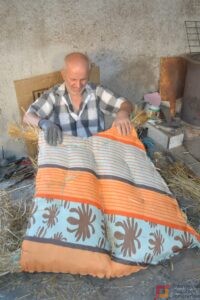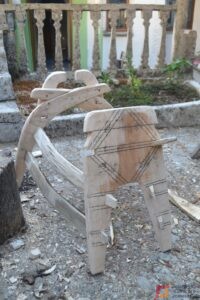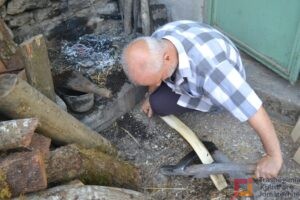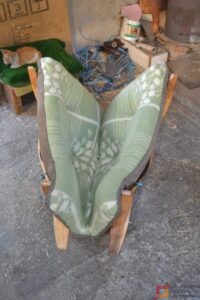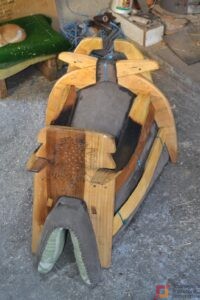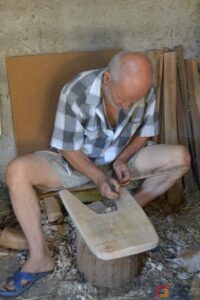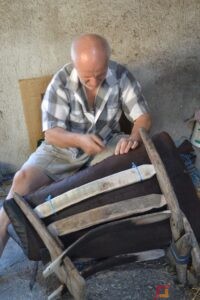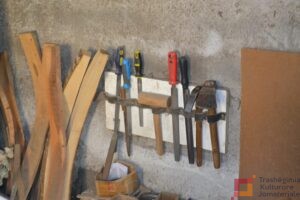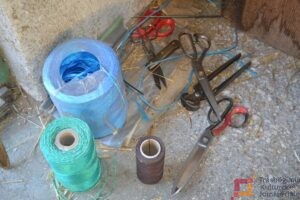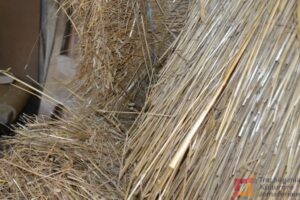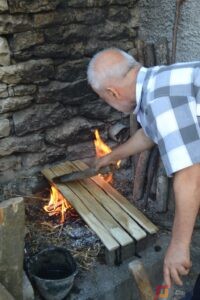Animal packsaddle-making craft has been passed down from generation to generation. Animals have been long used as the only vehicle of transportation in the stone city of Gjirokastra. This mountain backdrop boosted people to open up several shops where craftsmen made animal packsaddles. Today this sort of craftsmanship has seen a decline as work animals are less and less in use.
The packsaddle consists of two elements, the wood tree, and the pad. The wood tree is made from hackberry, mulberry, ash tree, or nettle tree. In the past, timber was converted into slats by cleaving timber with different pitching chisels and manipulating it with a rip hammer. These slats show a noticeable arched platform along some parts of the tree. This section is intended to best fit the animal’s back. The pad itself consists of four elements: 1. Stiff cotton fabric encasement for shaping the pad; 2. The straw used to stuff the packsaddle pad; 3. The blanket makes the pad more compact. It is mainly inserted underneath the pad not only to cushion the packsaddle so as to give a better fit to the animal’s back but also to absorb sweat from the animal’s back during work. 4. The leather or rubberized fabric goes over the pad to prevent moisture from getting through and to make it time resistant as much as practicable.
The first step in manufacturing a packsaddle is making a wooden frame. Arching of the wooden slats used for manufacturing the packsaddle frame is done by heating them. Slats are then occasionally sprinkled with water to preserve them from splitting and cracking, and so as to easily bend.
The next step continues with making the pad which is attached to the wooden frame size so that both match properly. The straw is stuffed into the pad, packed together, and then stitched inside the pad casing.
The pad available for use is inserted into the wooden packsaddle hollow and adjusted with the saddler’s fitting rod to take the best shape possible. In order for the straw-stuffed pad to remain fit to the packsaddle shape, it is tightly stitched with thick and waxed thread so that it becomes an impervious moisture barrier and is preserved from decay.
Not infrequently, the front panel of the packsaddle, which rests upright on the animal’s back, is often decorated with various figures. Among the most opt-for is the eagle figure. Making a packsaddle takes two working days.


